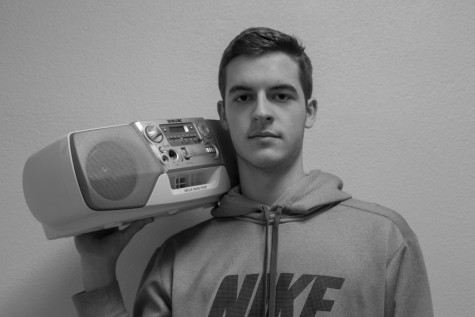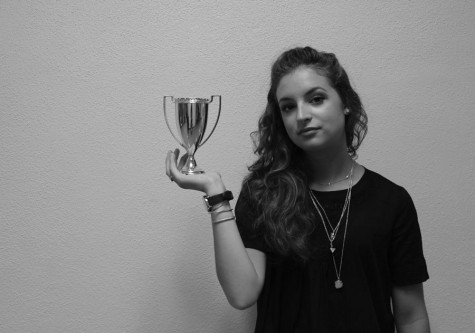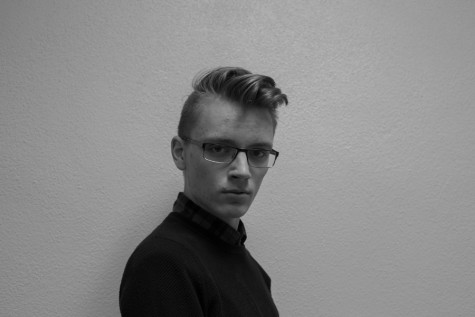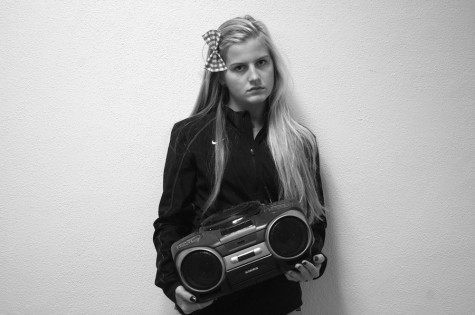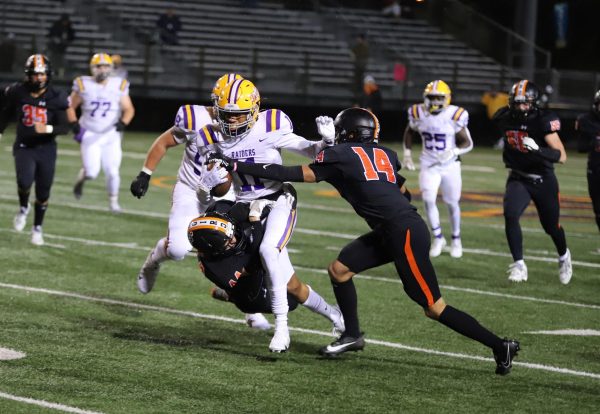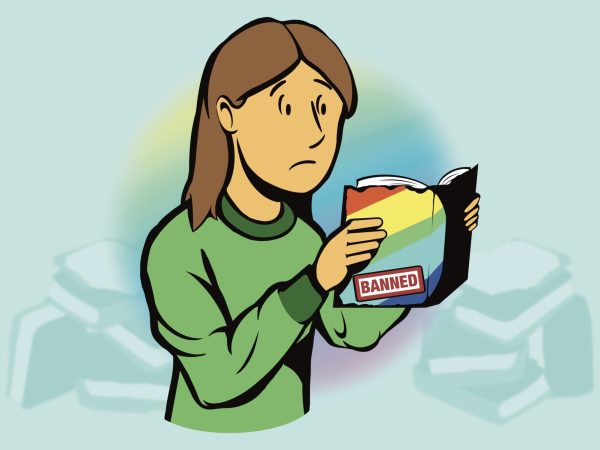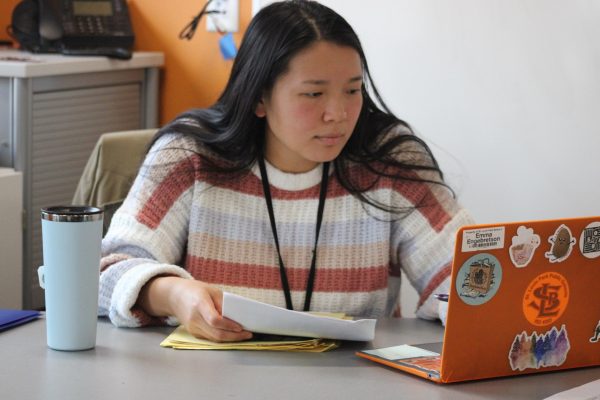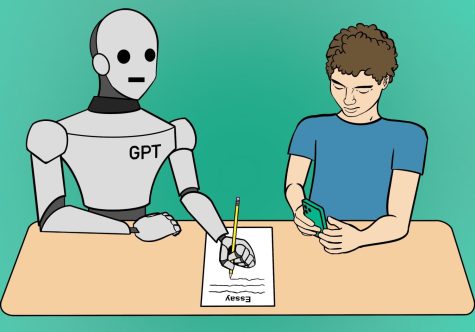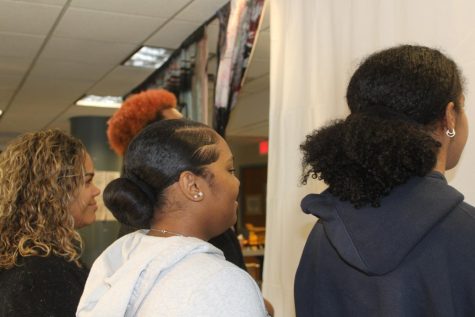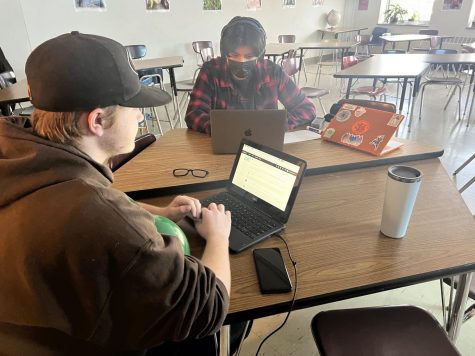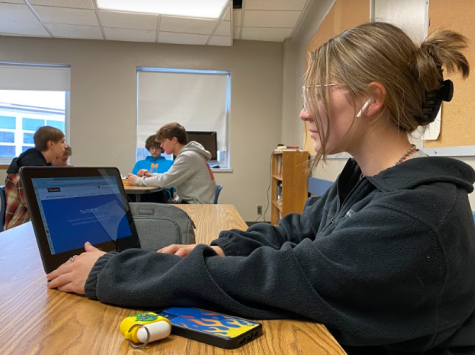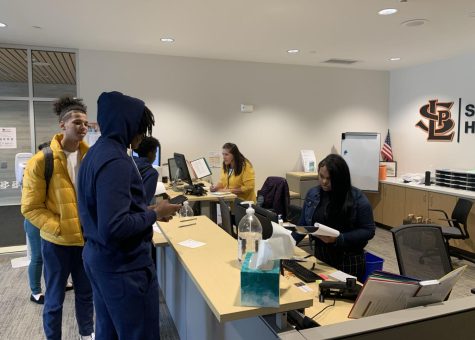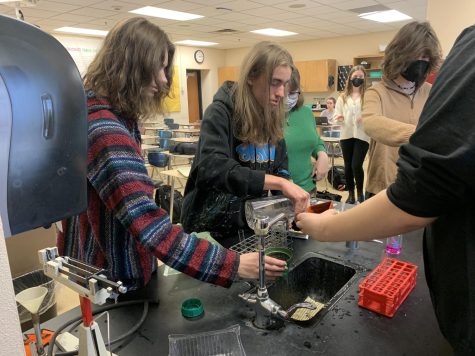See the Gap
December 16, 2014
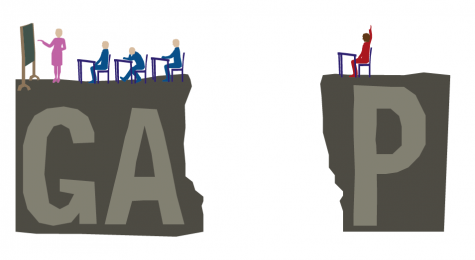
Art by Maddy Bremner
“Even as an adult I’m still trying to prove that people shouldn’t hold lower expectations for me,” teacher Lee-Ann Stephens said as she wiped her eyes and looked at her students gathered around her room.
According to Stephens, white teachers hold lower expectations for students of color and students of color don’t feel like they belong in advanced classes because of attitudes from their white peers.
“Academically I feel like I’m looked down upon,” said junior Zoya Block. “White kids are automatically expected to do well and black kids are pushed just as hard but they might not do their work.”
In a recent article on Education Post, Stephens understands not all students learn the same way and some students are coming to school better prepared to learn than others.
“Children don’t come packaged nicely with a bow of compliance,” Stephens said. “I don’t blame students for their circumstances.”
Stephens believes that instead of focusing on the deficits of students of color that educators should focus on their assets.
Senior Xavier Lawson believes teachers have a preconceived perspective about students from what they see outside of the classroom.
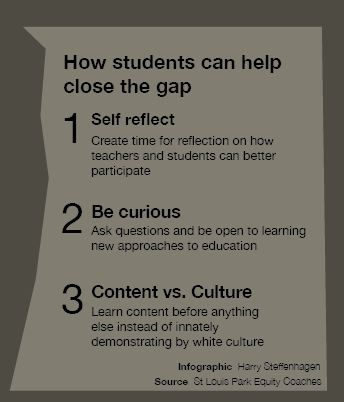
“Teachers set the standards from what they see in the hallway,” Lawson said. “There are students that don’t go to class and do bad things and they mess up the opportunities for the other students.”
Although teachers set standards from actions seen by both white students and students of color, Lawson believes teachers should try to treat all students as equally as possible.
Senior Jihan Jeilani believes students, not teachers, make a deeper impact in school when dealing with race.
“Truthfully, I think kids are intimidated by other races especially if there is a minority in a class,” Jeilani said. “It bothers me when I see my friends talk about it. I don’t think race should play a factor in someone’s learning.”
Junior Jerry Sanchez believes many students of color don’t take advanced classes because of the difference between the number of white students and students of color.
“They are afraid of being in classes with less students of color because they might feel isolated,” Sanchez said.
Sanchez doesn’t believe white students’ attitudes affect students of colors’ choices and more students of color should take advanced classes because of the different way of teaching and the challenge it poses.
However, Stephens believes students of color are hesitant to enter advanced level courses because of the attitude from their white peers.
“I think for other students it would make them feel a little better, make them feel a little more comfortable in the classes they are in,” Lawson said.
First semester last year, 165 students of color took 352 AP and IB classes, an improvement over first semester two years ago when 113 students took 270 advanced classes, according to Principal Scott Meyers.
For some students, taking classes with teachers and students that look and act like them is an important aspect to the classroom environment.
“There is a preconceived idea about how students of color should act,” Stephens said. “We need to expect excellence and not be surprised by it.”
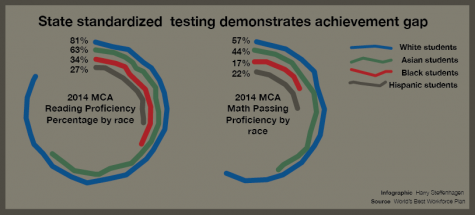
Change in teachers’ perspectives
Equity training in staff to close achievement gap
Every so often you might notice an adult sitting in a lone chair in the back of the classroom, silently taking notes and listening to the class and the teacher.
These adults are the equity coaches, a part of Superintendent Robert Metz’s multi-year plan to address the achievement gap, a difference in standardized test scores between students of color compared to white students.
Metz believes the achievement gap comes from the way teachers have been educating students over the years, not with bad intentions, but without realizing how they include their personal beliefs in their teaching.
“If a teacher doesn’t believe a student can achieve, they teach them with that belief and the student picks up on that,” Metz said. “It’s an adult problem and adults are the ones that need to change.”
According to equity coach Joy Esboldt, the equity coaches watch the teacher and class, taking note of the interactions between the teacher and students of different races and give feedback to the teacher about how to help the needs of underserved students.
According to Metz, almost all of the teachers at the high school are white in a school where only 60 percent of the students are white.
“We are not able to hire enough brown and black staff,” Metz said. “So we want to train our white staff to teach in a way so that non-white students will do better.”
Prachee Mukherjee, director of assessment, evaluation and research in the district office and a person of color herself, believes there is a lot the school is doing to try to eliminate the gap.
“Self reflection on prejudice and bias will help staff look at all points of view,” Mukherjee said. “Staff are learning to take into account multiple perspectives and not teach with the white norm just because they are white.”
Student group boosts confidence in the students to strive and succeed in school
As Sagal Abdirahman walks into St. Louis Park high school, she prepares herself to prove she’s just as smart as her white counterparts.
The High Achievement Program, known as HAP, is a program Lee-Ann Stephens joined fall of 2011. Stephens mainly works with Latino and African-American students to boost their interest in enrolling in tougher classes and confidence in themselves as scholars.
One of Stephens’ focuses in HAP is to show students of color advanced placement classes are meant for them despite the fact that very few students of color take them.
According to Stephens, HAP aims to break the stereotype that students of color aren’t smart enough to be in advanced classes.
Stephens also organizes college visits for the students, so they see what a college environment would be like.
“It’s really important for me to be able to show these students a realistic example of what they have to work toward in school if they want to end up going to a college where they feel like they belong,” Stephens said.
Senior Gustavo Manjarrez joined HAP his junior year. He heard about it from his friends and then found out he was put on the list by Stephens.
“It has impacted my life because HAP has helped me challenge myself to take harder classes,” Manjarrez said.
This is also true for senior Ja’Meila Evans. She heard about HAP through friends just like Gustavos case and found out Stephens wanted her to be a part of this program.
“It helps us achieve our goals and really challenges us to take harder classes even if we don’t feel ready,” Evans said.
HAP not only helps these students overcome educational barriers, but it also adds a sense of community among the students, according to Evans,
“It’s a time for all of us to get together, and vent about things with each other that we’re dealing with.”
It is extremely helpful as well as confidence boosting, according to junior Mara Henderson.
“We can go to a safe place for lack of a better term, and talk about whatever. But the best thing about HAP is having Mrs. Stephens as our advocate.”
HAP helps these students feel confident in themselves, pushing them to succeed in Advanced Placement classes, such as AP and IB. Without HAP, students of color may lack the advocacy needed for equal opportunity into a higher achievement pathway.



